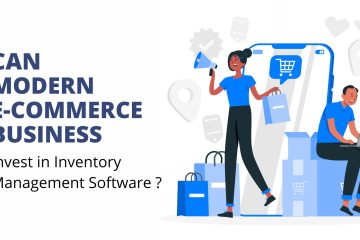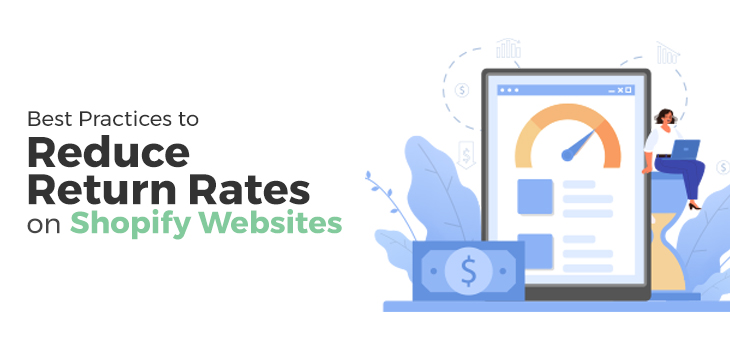If you want to get relevant traffic to your eCommerce store, optimize your website with SEO-driven content. eCommerce SEO is much more affordable than paid advertisements as it involves optimizing the entire website content rather than the landing pages. These include headlines, images, audio, videos, metadata, product description, and navigational structure. However, partnering with an IT company in Delhi specializing in eCommerce marketing will guarantee better outcomes than doing this alone.
What is SEO Driven eCommerce Store?
An SEO-driven eCommerce page is a digital marketing process of making your eCommerce website more visible and reachable to the right consumers through SERPs. It improves ranking, makes your brand credible, and ensures your website is at the top of the search engine result pages when people search for products you sell.
Each page published on your website must be optimized to draw traffic from search engines.
These include the home page, product pages, FAQs, about company, contact page, blog site, and service pages.
You must also make sure that each product has a dedicated page designed and optimized to attract suitable consumers from SERPs.
Why is SEO Content Necessary for eCommerce Businesses?
Imagine Mary is a mom-to-be. What does she do if she needs a baby carrier? She looks up Google. And then goes through different brands, options, product details, shipping date, return and exchange policies, prices, and other information that support her purchase decision.
Now imagine you are a baby care brand, like Bumzee. You have a better-quality baby carrier cum sleeper available at a better price on your website. But if your website doesn’t appear on Mary’s SERP, you will lose a valuable, recurring customer.
Even though your product is on the web, is it traceable?
eCommerce SEO provides an organic and long-lasting way to reach your target audience through great copy, high-quality images, informative blogs, and motivating CTAs.
As an 18 years-experienced asp.net development company in Delhi, having provided eCommerce digital marketing services to over 500 businesses, we have realized that quality content is king regardless of what we publish online. And if you optimize your eCommerce content, you will be helping your business to cross the first hurdle in customer acquisition.
Best Practices for Optimizing Content with SEO
When you start your eCommerce store, you will have only a handful of products and blogs, meaning you will have only a few pages to optimize and rank on Google.
But if your shoppers quickly and easily find what they want on your website, they will most likely browse through other pages and spend more time on your website. This will increase your Google rankings.
1. Organize and Optimize Your Store Structure
Talk to an IT services in Delhi and organize your store content in one of the following structures: Homepage à Category à Products
(Bumzee Home à Infant Wear à Pyjamas, Shorts, Dresses etc.)
- Homepage à Category à Sub-category à Product à Product sub-category
(Bumzee Home à All Categories à Sleepsuits à With hood / without hood)
2. Improve The Shopping Experience by Simplifying Your Site Architecture
There are hundreds of ways to improve your shoppers’ experience on your web store. A fast and mobile-responsive website must be the first and foremost step.
Responsive Website: Hire the best asp.net development company in Delhi to create a mobile-first website layout, as 90% of your customers shop from mobile devices today.
Avoid Sliders: Do not use sliders, carousels, or slideshows on your homepage or landing page banners. While sliders improve visual appeal, they can negatively impact SEO. They slow down page loading time, leading to higher bounce rates and lower rankings.
Reduce the size of the images within the sliders and ensure the text within them is accessible to search engines.
Use the Right Keywords: Explore social media hashtags, forums like Quora and Reddit, and competitors’ pages for keyword inspiration.
Use Keywords for Images: Optimize images with relevant keywords. Mention your primary keyword in the headline, meta tag, meta description, image alt text, and subheadings.
Remove Unnecessary Apps: When a website has too many applications, it can slow down its loading speed, which has several negative impacts, like high bounce rates, low conversion, lower user engagement, and poor ranking. Too many apps on a website can also produce clutter, negatively affecting user navigation and experience.
3. Optimize Your Product Pages
eCommerce businesses thrive on product pages. So, you must dedicate 100% of your energy to optimizing them. At least 70% of eCommerce owners write a few lines about the product and add some images. But you need more information on your product pages for Google to crawl, index, and rank them.
The product name is important. Consider adding common search terms, phrases, and primary keywords to your product name.
For example, if you are selling Handmade blouses and sarees, be sure to include the terms “handmade”, “sarees”, or “handwoven” in your product name.
URL: https://www.spatikaclothing.com/products/hand-embroidered-ponduru-ajrak-blouse
That way, the primary keyzword will be in the title, URL, and description. Make your product details copy descriptive, enhanced with keywords and latent semantic index keywords (LSI).
LSI keywords are related words or keywords that shoppers might use to search. Use them throughout the text to help Google understand the page.
Additionally, usage of the keywords must be consistent across all product pages.
For example, Keyword 1 – Fillers – Keyword 2 – Store Name
Product A – Lucknow Chikankari Kurtis – Buy Red Modal Chikankari Long Kurti – at Chikankari India
Product B – Lucknow Chikankari Kurtis – Buy Navy Blue Viscose Rayon Kurti with Mukaish Work – at Chikankari India
or
Service A – IT Services in Delhi – Book eCommerce SEO Services – From Best IT Company in Delhi
Don’t forget to interlink your other pages in your product descriptions to help users navigate your website. Include anchor text with target keywords for better results.
Optimize Product Image and Video: Do not use generic filenames like IMG00056.jpg. Instead, use the product name and the main keyword, such as spatika-mirrorwork-blouse-pink.jpg.
Add product images with alternative views, follow the above filename method to publish those images, and add the product name and the keyword in the ALT text. This will increase the chances of your images appearing in Google Images or the main SERP.
Add only Original Images and Videos of your brand. Do not use Stock photos.
To boost the possibilities of your customers buying your product, add a video to your product page, like how to install or use the product.
When writing ALT Text, remember the following dos and don’ts:
- Use primary keywords and product name.
- Don’t use generic keywords like offer, sales, discount, etc.
- Be as descriptive as possible: This parrot green modal fabric long Chikankari kurta with original heavy Lucknow Chikankari embroidery has 3/4 sleeves, a round neck, and flower embroidery. The sleeves, front, and back neck are embroidered.
- Use keywords coherently.
- Don’t describe other elements, like background, accessories, etc.
- If you have too many images, create a separate site map.
4. Market Through Blogs
Blogs optimized with target keywords and valuable information regarding your company, services, and solutions are invaluable in eCommerce SEO. Solve your customers’ problems, educate them about your industry, and explain how to use your products through blogs and articles.
Hire the Best IT Company in Delhi for eCommerce SEO
We will talk more about SEO-driven blogs and backlinks in our upcoming posts. If you follow our recommended practices, your eCommerce store will rank better in SERPs and generate more positive leads for your marketing efforts.
And finally, remember to hire the best Asp.net development company in Delhi for your eCommerce needs.


